At this technological revolution level stands the gummy industry. Advances...
Read MoreA Comprehensive Guide to Choosing the Best Gummy Sugar Coating Machine for Production


For any manufacturer attempting to make fine sugar-coated gummy candies, the sugar-coating machine is a significant decision. Choice and quality of equipment determine granulation and finish, also quality improvement of the product. Every second missed in shortening the process of coating is wastage avoided. Today, software packages exist starting from small coating machines for boutique operations to an industrial coating machine appropriate for large-scale manufacturers. Still, the technician finds it quite confusing in choosing just one. This guide aims to make it easier by outlining the key things to consider, the current technology on coating machines, and how to match your choice with your production goal. Whether it is to increase production or improve the quality of candy, this guide has everything you need to make an informed choice.
Understanding Gummy Sugar Coating
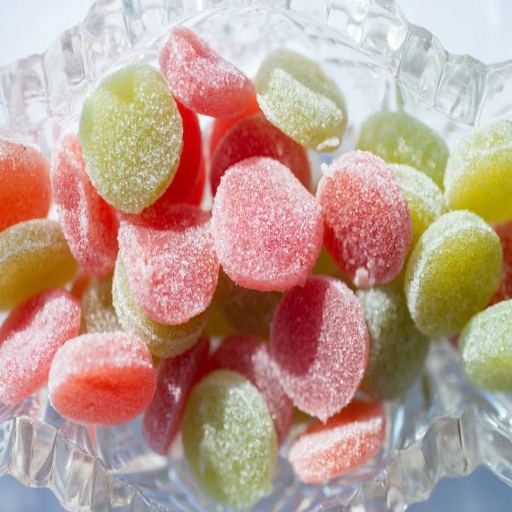
Explain Gummy Sugar Coating
This finishing gives the flavor, texture, and appeal to gummy-type candy products. The method involves coating the surface of the emulsion gummy candies with a very thin layer of sugar or sugar mixture that would provide a crunch complementary to its sweetness and an excellent contrast to the soft gummy interior. Such coating enhances the texture-taste experience. This coating provides moisture barriers and, therefore, prevents sticking among these candies.
The modern-day gummy sugar coating wasput under some revamping processes, from idealization of adhesion methods to customizable sugar blends for various tastes and production requirements. Producers may now opt for coatings with natural flavors, colors, or even functional ingredients such as vitamins to enhance variation and consumer attractiveness. This process especially assumes importance in packaging and distribution, whereby the gummy gets protection and remains attractive and enjoyable to eat.
Importance of Sugar Coating in Candy Production
As of today, there is a significant importance given to the sugar coating in confectionery manufacture, also being obvious in the list of its uses beyond simple sweetening. It gives a longer shelf life to the candy by protecting it against moisture and dirt. Some sources say the sugar-coated ones survive several times longer than the uncoated, thus being quite suitable for industrial shipping. They provide pleasant variations in texture, some degree of crunchiness, a glossy finish to certain confectionery, or sometimes simply a bit more fun to eat.
From an operational standpoint, sugar coating also enables efficient packaging processes through the protective layer that safeguards against candy sticking together or being deformed during various storage conditions. With modern coating methods, manufacturers now reap benefits by enhancing consistency, resulting in less waste and aiding in cost reduction while sustaining their sustainability efforts.
Types of Gummy Candies and Their Coating Needs
Different types of gummy candies are available, and their coating requirements vary according to their characteristics. Classic gummy bears may have a very thin coating of carnauba wax or merely vegetable oil, so that they do not stick together and get a smooth shine. This coating best preserves the distinct gummy texture and appearance through storage and transit.
And sour gummies do experience a different coating process however. They are typically coated with granulated sugar and citric acid to provide that slogan flavor with a bit of abrasive touch. This coating also enhances the sensory experience and stops the candies from absorbing much moisture, thereby holding on to their newfound freshness.
Vitamin-enhanced gummies form one membership of a handful of well-loved varieties dispensed in the health-conscious sector. Usually, a special coating is given to gummy vitamins to protect, ensure the stability, and maintain efficacy of their active ingredients-vitamins or minerals-throughout their shelf life. This coating would be a food-grade one, like one layer of modified starch or gelatin-another ingredient used for coating-that maintains the nutrients inside while also maintaining the proper texture and taste.
Additionally, novelty gummies may require more precise techniques to coat them due to their complexity. New techniques make it possible for companies to achieve more even coatings on these less conventional shapes and enhance the visual appearance, ensuring that the more exceptional designs remain intact.
Ultimately, gummy candy coating techniques are influenced by factors such as flavor profile, shelf life, and target audience preferences. Therefore, manufacturers must ensure that their techniques satisfy consumers’ expectations and meet production deadlines.
Types of Gummy Sugar Coating Machines

Overview of Gummy Sugar Coating Machines
Production efficiency, consistency, and quality are better ensured with modern gummy sugar coating machines that feature several high-tech advancements. Many machines now feature automated controls that distribute sugar evenly and precisely to coat each piece of candy, resulting in less waste and improved uniformity for optimal consumer appeal.
Programming controls allow you to modify the speed, coating thickness, and drying temperature. That’s the flexibility any process line should have: coating variations for different product types or flavor variations. For example, some of the machines can switch quite swiftly from normal sugar coating to special powder coating.
Industry benchmark data suggest major efficiency advantages, with some machines reaching up to 30% higher production output compared to older models. Additionally, features such as non-stick coating and a self-cleaning mechanism help reduce downtime during maintenance, resulting in higher overall productivity.
Additionally, more ergonomic designs are being developed in terms of hygienic conditions and food safety standards, featuring stainless steel components and sealed systems to prevent contamination. This development surely aids both in stringent regulations and keeps product quality and shelf life so that it is in demand not only from consumers but even from industry requirements.
Gummy Coating Techniques
The coating treatments are employed to make the gummy treat, which bastedly enhance the attractiveness and texture of the product itself, in addition to the usefulness and shelf life. Basic methods widely employed in applying coatings include sugar coatings, wax coatings, and oil-based coatings, with each having a separate function to act as a coating. Sugar coatings are used to impart sweetness and after shining in an alluring manner on the surface, which appeals to consumers. Wax coatings, such as carnauba and beeswax, provide a protective layer against sticking as well as a pleasant smooth feel to the adherent gums. Oil coatings usually consist of edible oils that keep the dried gummy products from sticking, during which they also help maintain the integrity of the product throughout packaging and transit.
Innovative developments in coating formulations have further strengthened the improvement of the production process. Some manufacturers apply water-based coatings in pursuit of sustainable and eco-friendly practices, which is aligned with the recent effort of the industry to reduce the environmental impact. Meanwhile, new-generation precision application technologies ensure coatings are applied evenly to optimize ingredient usage and guarantee the uniformity in quality of each batch. These innovations make gummy products somewhere in the forefront between consumer needs and government requirements set on the vending confectionery.
Coating Equipment Comparison: Pan vs. Drum Coaters
Pan coaters and drum coaters are already applying top-range coatings on gummy products. Both types come with their distinct advantages, suitable for common applications (production), and understanding their differences could prove vital when it comes to efficiency, quality, and return on investment.
| Feature | Pan Coaters | Drum Coaters |
|---|---|---|
| Design | Perforated or solid rotating pan with tumbling action | Cylindrical rotating design with continuous coating |
| Production Scale | Smaller batches, specialty product lines | Large-scale, high-volume production |
| Automation Level | Manual interventions often required | Fully automated with minimal human intervention |
| Control Precision | High uniformity control through adjustable parameters | PLC systems for real-time monitoring and adjustment |
| Processing Speed | Slower due to manual interventions | Faster cycle times with continuous operation |
| Flexibility | High flexibility for custom formulations | Less flexible but consistent for standard products |
| Initial Cost | Lower initial investment | Higher initial costs |
| Floor Space | Compact footprint | Requires more floor space |
Pan Coaters: For years, the pan coaters have seen favor in the confectionery trade as under-risk equipment used in coating applications. The pan coating machine comprises a perforated or solid rotating pan into which gummy sweets are tumbled as the liquid coating or syrup is sprayed or manually applied. A major advantage is the ability to maintain uniformity by varying the speed of rotation and other operating parameters. Pan coaters are able to provide a measure of flexibility for custom formulations without compromising quality in smaller production batches or specialty lines. However, such products tend to take longer to be processed due to manual interventions often being required.
Drum Coaters: On the other hand, drum coaters are designed for higher speeds, with larger-scale productions being fully automated. With the capacity to rotate in a cylindrical fashion, this equipment applies coatings continuously with minimal to no human intervention. Drum coaters enable highly efficient bulk production with faster cycle times and consistent coating distribution. Later developments introduced PLC (Programmable Logic Controller) systems into the drum coaters, enabling operators to monitor and adjust process conditions in real-time, thereby maximizing all process parameters for uniformity, minimizing ingredient waste, and sustaining production efficiency. While large-scale manufacturers find drum coaters well-suited, their higher initial costs and needed floor space may pose more problems than pan coaters.
Factors Considered: The choice between pan and drum coaters will heavily depend on the production scale, budget, and desired level of customization. Pan coaters may be more favorable for small and medium-sized producers of niche or innovative gummies due to their flexibility. Hand in hand, drum coaters are fast and consistent, which will be favorable for large producers who want to maximize throughput and automation.
Having emerging technologies inherent in both systems, such as data-driven analytics or IoT capabilities, would further enhance their performance in helping the manufacturer meet market demands for precision and consistency. Contrasting the strengths of both options against production goals will make the right choice of equipment.
Choosing the Right Gummy Sugar Coating Machine
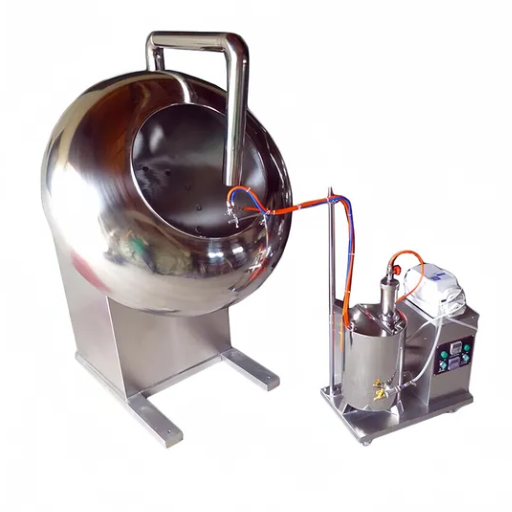
Factors to Consider When Selecting a Sugar Coater
In gummy production, several factors must be considered when selecting the suitable sugar coater, as it affects performance, efficiency, and product quality.
Capacity is a crucial consideration because sugar coaters are sized differently and have varying throughputs for both small-scale activities and mass production. Thus, it would be wise to opt for a machine that can meet current demands and can grow later on.
Uniformity of Coating is also critical, as a thin and even layer of sugar significantly affects the taste, feel, and appearance of gummies. Look for features like advanced spray technology or carefully engineered drum designs that can be relied upon to deliver consistent applications.
Ease of Cleaning and Maintenance is something that cannot be compromised once it is applied to food manufacturing, where hygiene standards are non-negotiable. Machines with detachable components can facilitate easier cleaning and maintenance, while corrosion-resistant materials help mitigate contamination risks.
Consider the Automation Potential of the Machine. From programmable settings and real-time monitoring, automation minimizes manual intervention, guaranteeing consistent results, which, in turn, saves time and labour.
It is crucial to consider Energy Efficiency and Sustainability Issues. Machines that minimize energy consumption translate to lower operating costs, alongside meeting the environmental regulations that are increasingly becoming more severe.
Utilize systems that incorporate state-of-the-art technology to reduce resource consumption while maintaining optimal performance. Considering these points in full, every manufacturer can ensure the selection of the correct sugar coater that meets its production or operational needs.
Best Equipment for Different Gummy Types
Selecting the right type of sugar coating equipment depends on the type of gummy being made, as particular textures, shapes, and ingredient compositions require different types of solutions. For the commonplace gelatin-type gummies, it is usually permitted that the pan is turned evenly all around and the temperature is well controlled to evenly coat the gummy, thereby preventing sticky surfaces. Pectin-type gummies, however, require a gentler touch of the heat and thus necessitate their coating machinery to be equipped with state-of-the-art cooling mechanisms, in addition to the coating systems, to maintain their structural integrity.
Vegan or plant-based gummy candies made with outgelling agents from agar or carrageenan require using special machines that, equipped with variable speed settings, impart treatment to the firmer textures without producing external fracturing. Consistency is very much required as well in sugar- or dietetic-type gummies, aside from those ranged as functional, enriched with vitamins or supplements. Precise dispensing and spraying allow the deposition of thin coatings in the exact application location, assuring uniformity, which leads to the enhancement of their consumer appeal.
An AI coating machine is thus made available to provide operators with the beauty of programming coating parameters for each gummy type. Real-time monitoring and adaptive control allow for maximizing the result, simultaneously minimizing the waste and inconsistent quality. Hence, buying a flexible machine for all types of gummies production guarantees ease of production and flexibility to quality.
Top Sugar Coating Machines for Gummys For Sale
The Contiline series stands for precision and dependability when it comes to the gummy sugar coating process. Being fitted with an extensive automated system, it gives the manufacturer the liberty to customize coating cycles depending on the shape and flavor of the gummy. The series of Contiline machines also bake in the concepts of energy conservation and material waste reduction. The modular concept also allows for easy turbine maintenance and troubleshooting or reconfiguration, depending upon the production needs, making it suitable for large producers.
The coating systems manufactured by ACMA are flexible, catering to production ranging from small batches to large-scale operations. Their sugar-coating machines are equipped with user-friendly controls that uniformly apply sugar while averting overcoating and producing unwanted waste. The other features demonstrate the emphasis on efficiency, while the rapid cleaning mechanisms facilitate quick changeovers from one product type to another.
The BFC series by Bohle is renowned for its superior engineering quality and ability to produce uniform sugar coatings. These machines employ a perforated drum that ensures a smooth airflow, resulting in a very smooth finish. Since sizes can be scaled from small to large, they cater to whatever size operation one wishes to run. There is widespread appreciation of this series, as it shortens the candy coating time without harming the coating quality.
The Coperion sugar coating machines incorporate mixing technologies and coating technologies, resulting in improved products. Accordingly, these machines are advantageous when it comes to preserving the delicate gummy textures from clumping or distortion during the coating processes. By being designed sustainably and consuming less energy with other eco-friendly options, Coperion solutions should enable manufacturers to take the greener path while remaining highly productive.
Tanis Confectionery marks precision and flexibility in producing the finest sugar coating equipment. That equipment has sugar coating quality evenly and consistently for any gummy formulation. Operators have user-friendly touchscreen interfaces to set detailed parameters as they feel appropriate for the batch. Construction of Tanis machines was constituted of the most rugged materials and heavy-duty construction to assure highest durability and long-term reliability.
Gummy manufacturers can capitalize on these innovative sugar coating machines to obtain improved yields, better quality, and greater agility in responding to demanding market trends-the factors that determine one’s competitiveness in an ever-changing confectionery industry. Each of these machines has its inherent benefits, enabling manufacturers to choose the machine that best suits their operational requirements.
Gummy Making Solutions and Techniques
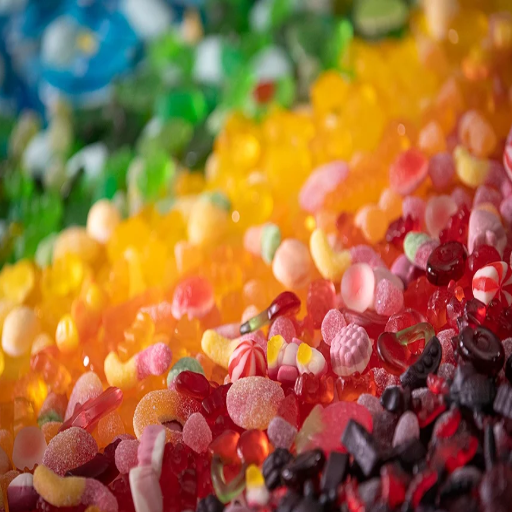
How to Make Gummy Step By Step
- Gummy Base Formulation: Gelatin mass should be the basis for gummy preparation. Usually, a gummy base includes gelatin, water, and a sweetener either sugar or corn syrup. Depending on the texture being sought, the ratio should be altered, as this greatly affects the experience of eating a gummy. On the other hand, some manufacturers opt for an alternate gelling agent like pectin to cater for the demands of vegan or allergy-sensitive consumers.
- Flavoring and Coloring: After preparation of the base, the next step is the addition of flavoring and coloring agents of the finest grade. The natural flavors-a name given to fruit extracts or essential oils-are preferred, but the synthetic ones are more advantageous with respect to steady supply and lower cost. Color should be well blended for uniform color and pleasant appearance of the finished batch.
- Heating and Mixing: The mixture should be warmed while stirring gently until the casual material dissolves completely. Then, the heating must be kept below a certain temperature so that while the gelling agents activate, the mixture retains its ideal consistency. At some instances, the mixture can be held at a temperature of between about 230°F and 240°F for a pretty short while, mainly to achieve good mixing while avoiding scorching or overcooking.
- Into molds: It is a depositor that fills the heated gummy mass into candy molds of pre-designed shapes. The mold shapes and sizes can be customized to brand identity or seasonal trends. This step must ideally be automated to be sure of uniformity and provide a gross production buffer time.
- Cooling and Setting: The molds have to be conveyed in a chilling tunnel or refrigerated setting for setting gummies. Cooling disintegrates gummy formation and sets in chewiness. Cooling generally lasts between 20 and 60 minutes, depending on the recipe and surrounding condition.
- Coating and Finishing: This step is optional. After setting and demolding, the gummies might be coated. Manufacturers, generally apply a sugar or sour powder coating or a high-tech sugar-coating system may be utilized for that polished finish. Additionally, an oil coating can be added to prevent sticking and provide an improved mouthfeel.
- Quality Control and Packaging: In a comprehensive sense, the quality check for texture, taste, and appearance is conducted before packaging. After approval, the gummies are packed by machines to preserve hygiene and maintain product freshness. Depending on the requirements, packaging can be very light, i.e., filling individual sachets, to heavy, i.e., bulk pouches aimed at meeting the end customer’s or intermediate distribution channel’s requirements.
- Storage and Distribution: Store the finished gummy candies in a cool, dry place to maintain quality and prevent melting and sticking. Proper inventory and distribution management ensure that products reach the markets in guaranteed perfect condition, ready to be enjoyed by consumers.
When the above-listed steps are followed to perfection, along with modern machinery and improved recipes, gummy manufacturers ensure the production of high-quality, high-proof, and appetizing products that attract consumers, thereby creating brand loyalty.
Integrating Coating Equipment into Production Lines
An integrated coating equipment in gummy production lines has to be planned amidst the quality consideration of the product and for smooth efficiency. Contemporary coating systems apply finishing touches in uniformity: an oil, a wax, or a sugary coat. The coating itself relatively beautifies and gives shelf stability to the gummy. Its manufacturers should therefore try to look into the proper fit of equipment with the production line, as improper fitting concerns introduce downtime and bottlenecks to production.
Being the top-tier coating equipment, it has automated controls and application mechanisms that ensure one-to-one and uniform coverage, even in bulk production. These systems feature an interface that can be watched by operators who fine-tune the parameters: coating thickness, drying speed, among others, according to strict requirements of different types of products. For example, a fully automated drum coater is used in gummy production. The speed of rotation and spray nozzles is adjusted so that the coating is evenly applied to varying batches, and every single piece satisfies strict quality requirements.
When working in complement with manufacturing processes, coating equipment can significantly boost production line efficiency by reducing manual labor and waste. Studies confirmed that automated coating systems can enhance production speeds by up to 20% while ensuring uniformity and quality control, which in turn maintains consumer faith in the product.
Coating equipment also needs to be well-maintained; regular cleaning, maintenance, and calibration will ensure the longevity of operation and continuous output of quality. With integration done well and cutting-edge technology at their disposal, manufacturers can stay competitive as the demand for gourmet, durable gummy products grows.
Advanced Coating Methods for Quality Enhancement
The confectionery industry is experiencing a sort of shift toward more sophisticated and innovative coating methods that tended to make the gummy products more attractive and functional. It includes the spray technique applied properly to coat the materials without wastage and maintaining consistency of the product. It is a high-level application wherein coating thickness is measured in real-time, allowing manufacturers to maintain strict control standards at the highest line efficiency.
Another transformative method that affects freshness retention for gummies and protects moisture-sensitive ingredients, such as vitamins and minerals, is the use of edible nano-coatings. These super-thin layers provide moisture and oxidation barriers to the products without altering their taste or texture, thereby extending the products’ shelf life and maintaining their nutritional value.
Another technology providing better-quality products is temperature-controlled drums. This technology prevents degradation of the ingredient and produces a uniform finish, even under demanding production schedules, by maintaining the environment at optimal conditions throughout the coating operation.
Meeting consumers’ desire for clean labeling is something that has seen an increasingly popular trend with manufacturers of natural coating systems. The coating incorporates plant extracts and starches to impart sheen and palatable mouthfeel. This means, technically, that application of these new technologies would provide gummy confectionery products that satisfy today’s expectations of processability, functionality, and displayability.
Maintenance and Troubleshooting of Gummy Sugar Coating Machines
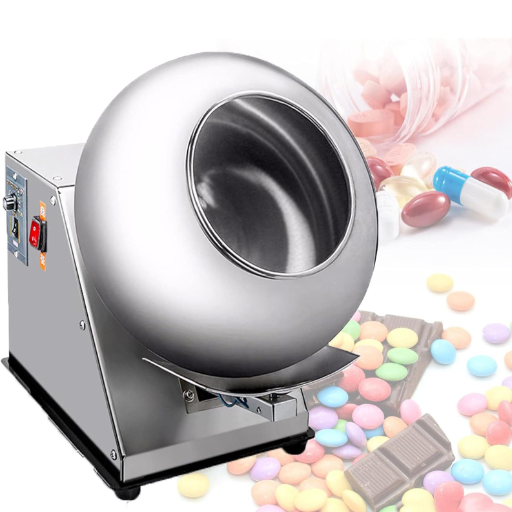
Basic maintenance improves longevity
For gummy sugar coating machines, my experience has taught me that proper maintenance is often contingent on consistent care, attention to detail, tracking, and documentation. For example, after any production, I always ensure cleaning is carried out. Should traces of sugar or coating materials remain and dry up inside the machine, they tend to hamper performance; thus, I am very keen on ensuring that no surfaces, nozzles, or conveyor areas are left with any buildup. I use food-safe cleaners and warm water to ensure cleanliness without harming any sensitive parts.
With the idea in mind to identify problems early, I schedule periodic inspection routines to tackle daily operations and maintenance. My inspection usually includes a visual check for mechanical wear and tear on components such as bearings, belts, and drums in rotation. Cleaning and replacing any component that may be in an advanced state of wear is said to be very helpful in ensuring the machine’s longevity and minimizing production downtime. Proper lubrication of moving parts was one step I had never omitted. When done adequately, it ensures smooth operation and prevents unnecessary stress on the equipment.
Since I always refer to the manufacturer’s maintenance instructions while keeping a thorough record of all maintenance work undertaken, these actions keep me truly current with best practices and prevent me from overlooking any vital maintenance tasks. Consistently adhering to these maintenance measures has enabled me to achieve longer machine life cycles and more reliable production outcomes in the long run.
Common problems and their solutions
A basic problem that I very frequently encounter is overheating. It is very commonly caused by a lack of air circulation, too much usage, or clogged air filters. First of all, I make sure that there is proper air circulation by physically removing any blocks in the ventilation area. Furthermore, I make sure that air filters are kept clean or replaced as necessary so as not to accumulate wild debris. Also, I control the conditions of operation, along with resting periods during extended use, to maintain lower temperatures.
Sudden mechanical wear is a frequent cause of breakdown; it mostly arises from inadequate lubrication or prolonged working periods under excessive loads. So I always look over whatever machinery might have a reasonable lubrication schedule, applying the proper friction inhibitors (usually those recommended by manufacturers). I then would prefer to keep an eye on every moving part capable of showing initial signs of undue stress or misalignment since those indications may become very costly to repair if left unattended. Finally, preventive maintenance helps keep minor wear and tear from growing into costly repairs.
An electrical malfunction can cause a disruption in operation; for example, some causes are defective wiring, loose connections, or power surges. It is, therefore, my practice to inspect the wiring for any visible damage and forcibly test the connections to make sure they are secured. One of these simple yet highly practical things would be to install a surge protector or keep the input steady. Awareness of such things will help me spot early warning signs to address them before productivity is affected.
Upgrading Your Sugar Coating Equipment
Upgrading sugar coating equipment is employed to improve production efficiency, maintain product quality, and lessen downtime. I have noticed that the first step is to look at the equipment and analyze the performance characteristics that bottleneck the operations or the disruptive features that plague the production operations. They might be coating inconsistencies, speed, energy consumption, or maintenance requirements. Once these pain points or concerns are identified, I can decide whether an upgrade to some components would do better or replacement of the whole system would be preferable.
Setting aside an upgrade occurs due to systems not affording modern production applicability. These may include high levels of automation, precise controls, and energy-efficient technologies. Such equipment can be programmed to provide consistent coating thickness in order to reduce material waste and hence overall production. Systems also are preferred that are easy to clean and maintain to limit downtime for sanitation and, at the same time, maintain industry compliance.
Staying up-to-date with scalability is another aspect I consider. I find it practical to select equipment that can handle today’s production requirements and provide for an increase in the future, thereby maximizing investments over a period. As part of my investigations, I ensure that the equipment will actually improve the process and satisfy operational goals by asking suppliers and studying the case histories of similar upgrades. Therefore, the purchase of any modern sugar coating equipment would become the number one way to maintain efficiency; meanwhile, quality would have the elevator shaft to move on under, and then competition in this fast-paced world would be in tow.
Reference Sources
-
How to Sugar Coat Gummies: Techniques, Tips, and Equipment
Offers expert techniques for sugar coating gummies, including equipment options and benefits. -
Gummy Manufacturing Process: Complete Guide
A detailed guide covering the machines, raw materials, and steps involved in gummy production. -
The Ultimate Guide to Gummy Coating
Explains everything about gummy coating, including the importance of using the right equipment. -
Gummy Candy Sugar Coating Machine
Offers a range of gummy sugar coating machines, complete with specifications and pricing details. -
Mini Sugar Coating Machine
Features a compact sugar coating machine ideal for small-scale production.
Frequently Asked Questions (FAQs)
What is a gummy sugar coating machine?
What is the working of the sugar coating process?
What types of coatings apply to gummies?
What benefits does a candy coating machine provide?
What kind of gummies are usually produced?
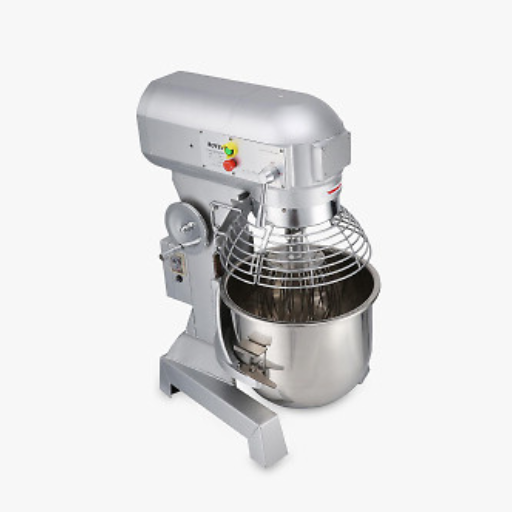
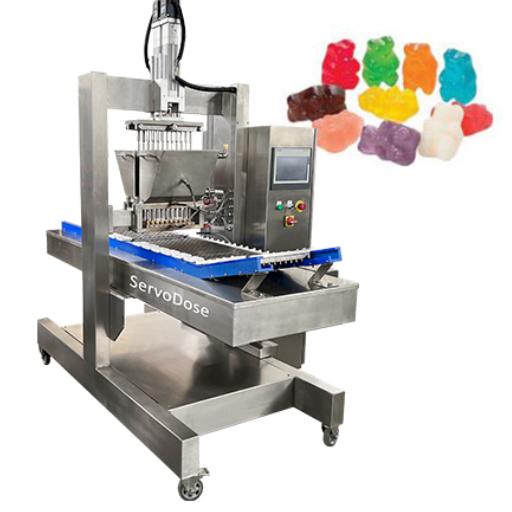
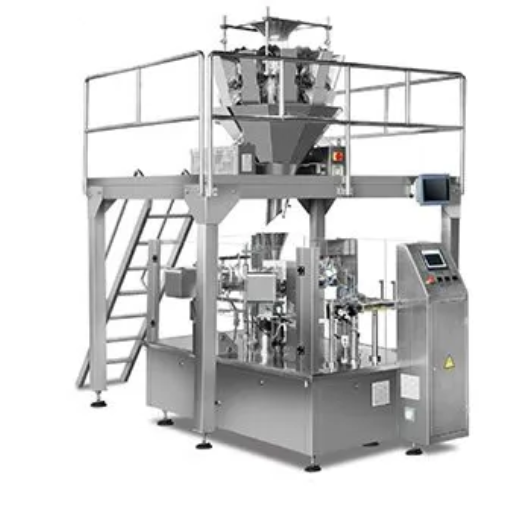
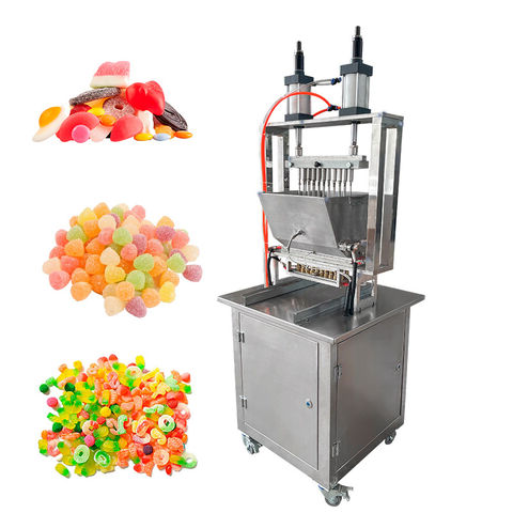
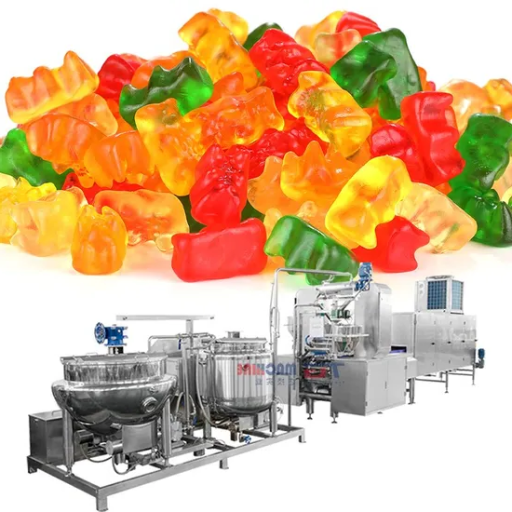
Blog Categories
Popular Blog Tags

Shanghai Fude Machinery Manufacturing Co., Ltd is a leading manufacturer of top-notch gummy and cookie making machines with more than 15 years’ experience in the industry. We provide creative equipment that ensures accuracy and speed while sharing intelligence with food producers. Shanghai Fude remains to be one of the most reliable companies for food machinery because of its dedication to perfection.



